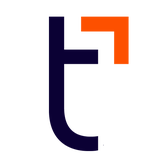How to Enhance Your Business with PEO Performance Management

Table of contents
- 1.Core PEO Performance Management Capabilities
- 2.Performance tracking
- 3.Goal setting
- 4.Employee development programs
- 5.Making life easier for managers
- 6.Key Evaluation Criteria for PEO Performance Management
- 7.Technical capabilities
- 8.Service and support
- 9.Scalability
- 10.Cost considerations
- 11.A PEO Performance Management Solution
A professional employer organization (PEO) works with businesses to deliver comprehensive HR solutions, including performance management. This outsourced service helps small and mid-sized enterprises enhance employee performance and streamline processes.
Left to their own devices, some SMBs settle for an occasional attaboy or the traditional annual performance review. PEOs provide structured performance management tools and systems. They help SMBs set clear, measurable objectives that align with strategic business objectives. With a PEO's help, SMBs can provide ongoing feedback and regular check-ins—done in a spirit of open communication and engagement.
Businesses sign up with PEOs for a wide range of services. If you are particularly interested in enhancing performance management at your business, this article will show you the value of PEO outsourcing services and help you find the services you need.
Core PEO Performance Management Capabilities
PEOs have the expertise, experience and technology to make performance management easy for SMBs. For example, HR outsourcing companies can provide tools that track employee development, issue reminders for reviews and keep evaluations consistent.
The human resources information systems (HRISs) that are a common part of PEO services help you centralize all performance management systems and records.
Performance tracking
Leading PEOs empower businesses with sophisticated performance management solutions that drive workforce productivity, engagement and results. Their technology platforms track performance metrics and provide actionable insights for managers and HR teams.
Other things to look for include:
- Real-time performance dashboards and reporting, including workforce analytics.
- 360-degree feedback systems that store input from peers, subordinates, managers and other sources.
- Performance trend analysis and predictive insights.
- Integration with payroll and compensation data, which is useful for compensation planning.
Goal setting
PEO goal-setting frameworks encourage collaboration between employees and managers. Vague or impossible goals are counterproductive. PEO services help companies set SMART goals (Specific, Measurable, Achievable, Relevant, Time-bound).
These frameworks facilitate regular check-ins and adjustments, promoting continuous alignment and motivation, to the benefit of the organizational culture.
Other things to look for include:
- OKR (Objectives and Key Results) frameworks
- Cascade goal-setting from company to individual level, to facilitate goal alignment
- Progress tracking and milestone management for career advancement
- Alignment with strategic planning and KPIs
Employee development programs
PEOs offer extensive development programs, including training modules, workshops and e-learning platforms. These programs are designed to enhance employee skills and competencies. Providing them helps to maintain a culture of continuous learning and enhancement. It promotes employee engagement and could support employee retention in the long term.
Other things to look for in this area include:
- Personalized learning and talent development plans
- Skills gap analysis and training recommendations
- Career pathing and succession planning
- Mentorship program coordination
Making life easier for managers
PEOs can give managers tools that support leadership training, feedback and decision making. Such tools can help managers boost employee satisfaction by giving them productive feedback and training. The tools also can work to directly benefit managers by their skills.
Other HR outsourcing benefits to look for include:
- Manager training on performance conversations
- Tools for conducting effective reviews
- Coaching resources and best practices
- Performance improvement plan (PIP) best practices
Key Evaluation Criteria for PEO Performance Management
Selecting the right PEO is a critical investment for any business. Because pricing models and features can vary widely between providers, careful preparation and thorough due diligence are essential for effective resource allocation.
To get the most value from a PEO relationship, it’s important to communicate openly with prospective providers. Be sure to ask detailed questions about service levels, contract terms, technology integrations and their approach to performance management.
To set the stage for a successful and enduring HR relationship, carefully assess PEOs on these important points.
Technical capabilities
When evaluating a PEO, the HR technology platform is a good place to start. It supports everything from payroll and benefits processing to performance management. Among the things to check on, include:
- Platform usability and user experience
- Mobile accessibility and remote work support
- Integration capabilities with existing systems
- Data security and compliance features
Service and support
The PEO relationship will cover many day-to-day HR functions. Performance management is important, but you'll also want to assess other key aspects, including:
- Implementation timeline and process
- Ongoing client support and training
- Dedicated HR expertise and organizational consulting
- Change management assistance
Scalability
PEOs are known for their ability to meet an SMB's HR needs as it grows, diversifies, or changes direction. Things to assess in this area include:
- Ability to grow with your business
- Customization options for different roles/departments
- Multi-location and remote workforce support
- Industry-specific features and compliance support
Cost considerations
To budget effectively and avoid unpleasant surprises, get a firm grasp of how PEO costs are determined, where hidden fees might arise and what’s included or excluded in the service agreement. Learn all you can about:
- Pricing models and fee structures
- Hidden costs and additional charges
- ROI calculations and value measurements
- Budget planning for implementation
A PEO Performance Management Solution
TriNet keeps a steady focus on enhancing the way SMBs meet their HR responsibilities. Our comprehensive HR platform will enable you to manage the employee lifecycle from recruiting and onboarding to payroll processing and benefits administration.
Our end-to-end approach can help you build an effective performance management program. Expert will work with you to assess and design a comprehensive performance process. Then, our cloud-based applications will empower you to execute on your strategy.
We can help you create an easy process that benefits your employees and the bottom line. With TriNet, your performance management can include:
- Real-time feedback
- Cascading goals
- Streamlined performance reviews
- Custom and pre-loaded review templates
- Activity tracker
To learn more, download our free eGuide: Five Signs It’s Time to Switch Your PEO.
This article is for informational purposes only, is not legal, tax or accounting advice, and is not an offer to sell, buy or procure insurance. It may contain links to third-party sites or information for reference only. Inclusion does not imply TriNet’s endorsement of or responsibility for third-party content.

TriNet Team
Table of contents
- 1.Core PEO Performance Management Capabilities
- 2.Performance tracking
- 3.Goal setting
- 4.Employee development programs
- 5.Making life easier for managers
- 6.Key Evaluation Criteria for PEO Performance Management
- 7.Technical capabilities
- 8.Service and support
- 9.Scalability
- 10.Cost considerations
- 11.A PEO Performance Management Solution






